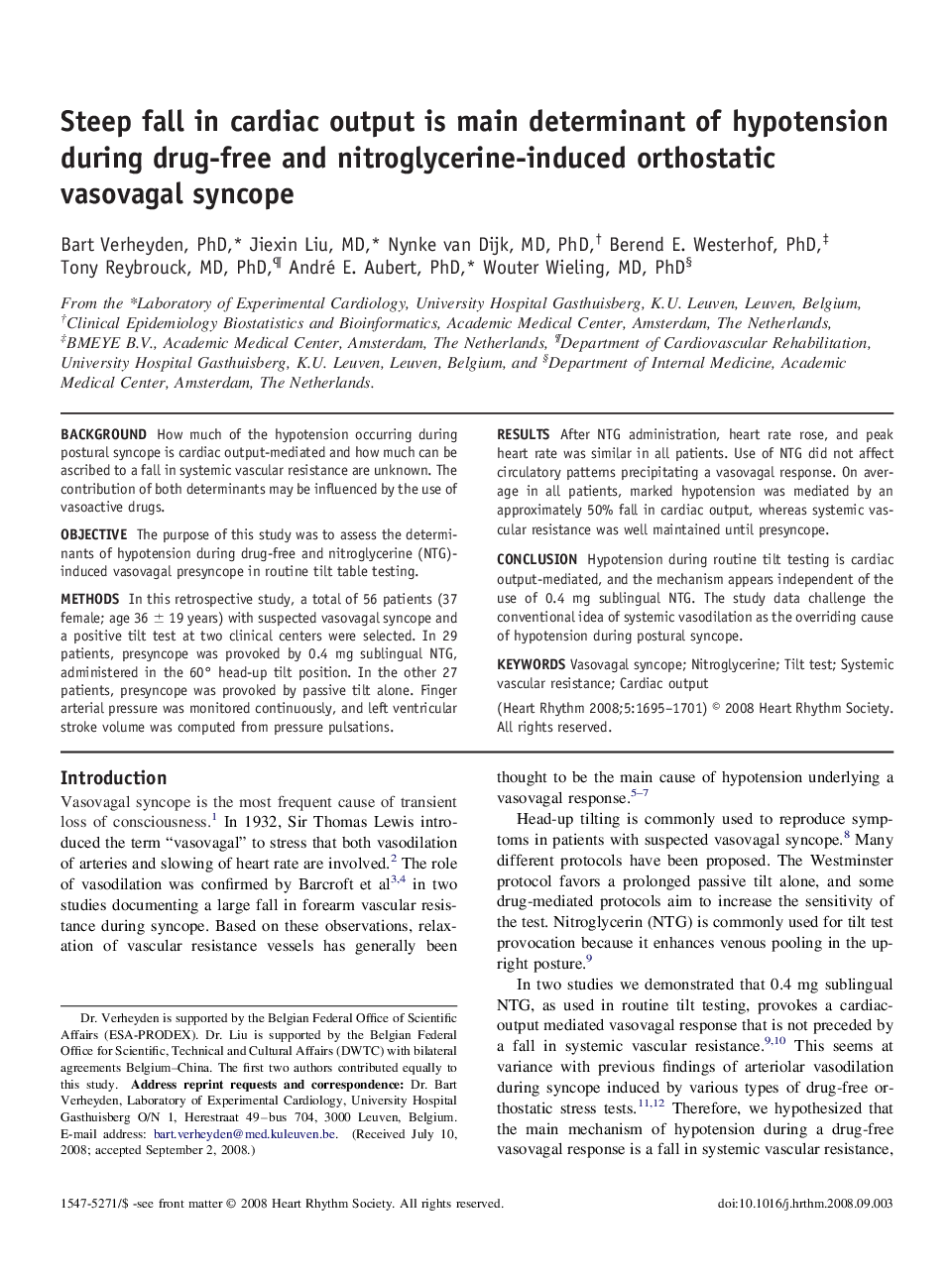| Article ID | Journal | Published Year | Pages | File Type |
|---|---|---|---|---|
| 2925100 | Heart Rhythm | 2008 | 7 Pages |
BackgroundHow much of the hypotension occurring during postural syncope is cardiac output-mediated and how much can be ascribed to a fall in systemic vascular resistance are unknown. The contribution of both determinants may be influenced by the use of vasoactive drugs.ObjectiveThe purpose of this study was to assess the determinants of hypotension during drug-free and nitroglycerine (NTG)-induced vasovagal presyncope in routine tilt table testing.MethodsIn this retrospective study, a total of 56 patients (37 female; age 36 ± 19 years) with suspected vasovagal syncope and a positive tilt test at two clinical centers were selected. In 29 patients, presyncope was provoked by 0.4 mg sublingual NTG, administered in the 60° head-up tilt position. In the other 27 patients, presyncope was provoked by passive tilt alone. Finger arterial pressure was monitored continuously, and left ventricular stroke volume was computed from pressure pulsations.ResultsAfter NTG administration, heart rate rose, and peak heart rate was similar in all patients. Use of NTG did not affect circulatory patterns precipitating a vasovagal response. On average in all patients, marked hypotension was mediated by an approximately 50% fall in cardiac output, whereas systemic vascular resistance was well maintained until presyncope.ConclusionHypotension during routine tilt testing is cardiac output-mediated, and the mechanism appears independent of the use of 0.4 mg sublingual NTG. The study data challenge the conventional idea of systemic vasodilation as the overriding cause of hypotension during postural syncope.
